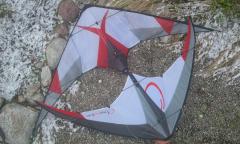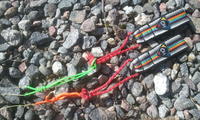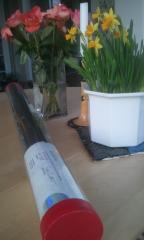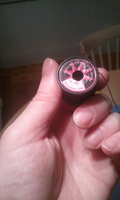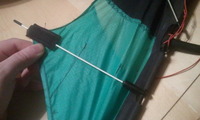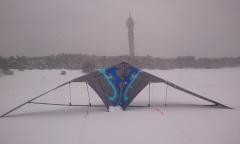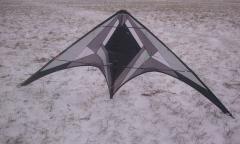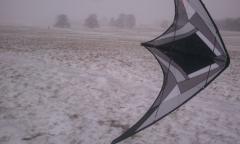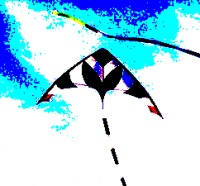-
Posts
580 -
Joined
-
Last visited
-
Days Won
27
Content Type
Profiles
Forums
Gallery
Downloads
KL Shop
Blogs
Articles
Everything posted by Exult
-
From the album: Exult's Photos
This is to prove that the Aerostar Sano SSL ( http://kitelife.com/forum/gallery/image/5708-aerostar-sano-ssl/ ) is a spitting image of the ITW Hydra through the image ( http://kitelife.com/forum/gallery/image/6185-sail-panel-design-style/ ). Don't you aaabsolutely agree ? -
Yes, recorded with a microphone in the centre of the wind window that the (quick?) kite will pass very close to so that the doppler effect becomes evident. For some kind of idea listen to this video of passing Fazer kites ( https://www.youtube.com/watch?v=w8vbjOvrRJM ). Some soft material could be applied around the microphone so that the wind in itself will not make a noise when interacting with the microphone. How far from a city would one need to go find a truly quit spot to record this? On the other hand being far from the civilization the odds for finding quit surroundings might be better, but one still would need to avoid waves, rapid white water, bird song,... How much background sounds can be filtered out afterwards? Another more shocking sound could be a hard 2-point landing, but perhaps that would be more of an alarm sound. On the other hand one could lower the volume somewhat and digitally make it into a series of much rapid landings. Or combining wumps, 2-point landings and foil kite smashing vertically into the ground into some kind of drum solo rhythm. Could this be sampled from existing material or would it needed to be recorded from scratch? I believe that the sound shouldn't be unpleasant - a humoristic, just sudden, bone chilling sound isn't likely to work long term.
-

Kites tagged with temporary cards until I find something better
Exult commented on SHBKF's gallery image in Member's Galleries
Along with a colleague at work you are doing me a favor. The colleague do horses and spend a lot of time (for sure) and money (likely) there and makes me in comparison look quite balanced. Step 1: Explain about high end, high quality and exclusive boutique kites to my better half (i.e. my wife). Step 2: Show this image and point out: "You see I'm fairly economical - it could have been a lot lot worse..." Added 22th April 2017: Me being at least 5% envious - how could you ever suspect that? -
From the album: Exult's Photos
This is an image comment inspired by @SHBKF 's image http://kitelife.com/forum/gallery/image/5708-aerostar-sano-ssl/ . I can't claim any first in series rare prototype extra special one of a kind kite here (where do one get hold off stuff like this and stuff like @riffclown 's http://kitelife.com/forum/gallery/image/6184-cavaliers-du-ciel-prototype-23/ anyway?). The reason/excuse for publishing this image is that I think the artistic part of the design, the sail pattern of the Aerostar Sano SSL, to some extent though large differences, share a similar style with the kites in the image. So what was the thought/reason behind getting an Obsession (at work at least one collegue nodded and said something like "I told you so" regarding the name of the kite when bought it about 1.5 years ago). I guess it is simple as that, that I got curious after seeing the Flight School VHS videos by the end of the nineties. I already got the HQ Jam Session and the HQ Meastrale. This Christoph Fokken kite kind of remained to be tested. It got a special trick line arrangement being connected to a stand off and the LLE consists of solid 4mm carbon fibre rod that makes the wingtips flexible and gives the shape of them. Unfortunately the quality of the stand offs in this more recent implementation of the design left much to be desired. I've only tried it a few times more than a year ago and most of the times I needed to repair it! Now after more than a year it has been repaired after its long "sleep" and hopefully no more weak spots remain. So now there should be nothing that stands in the way of testing it. However there are so many things, like tricks (much "needed")/kites/repairs/..., I'd like to try out properly. On top of that I've also dipped my toes into a new realm of kiting to really make sure that the time will not be enough to properly test the Obsession soon. The other kite, the JB's ITW Kymera, is already most likely well known to the KL users, so I say nothing further (for once). ... Well, to be fair then, the difference in freshness of the two kites in the image I'd say is due to the heavy use of the Kymera. -
... Is the problem that the sleeving had too large diameter from the start or became thicker during use? My take on this is to verify that the sleeving has not slided and grown thicker. Check if this has happened by seeing if it is possible to make it thinner. A temporary fix if you don't want to adjust the lines while on the field is to attempt to migrate some of the sleeving from the place for the larks head, i.e. from the middle of the sleeve. The thickness of the sleeving might change with time if the inner end of the sleeve slides towards the end of the line. This happened to the orange sleeve on the handle side - it was time to adjust the sleeve position/relative line lengths and stretch the sleeving.
-
From the album: Exult's Photos
"Flowers?" you may ask - well I didn't get them for this event, they were already around at the time when receiving the shipment. However this is a happy, problematic and almost solemn occasion. I stepped into my time machine (not true) to order a new kite from the past (very true). I ordered an un-opened Prism Vapor kite. The kite was sold as #107 (but I don't know I haven't opened it) and the transparent tube contains a signed paper by Mark Reed and Scobie Puchtler (if the kite itself also carries the signatures I don't know). This is over-kill and I don't want this. I mean I very much appreciate having a Vapor, the look is that of pure beauty, I'm really curious how it is to fly it and have really drooled over it also in the past. It's the most collectors kite that I've ever had and that is the problem. This gets in the way of actually using it! How should I use it? Indoor only? Use it in mud and sand (which is how I use kites because a lost kiting opportunity in itself never comes back)? Hang it in the ceiling as a decoration (which I would do if I unrealistically would have several)? But in the end I don't think that there is another kite with its looks and other properties - the only way that I can see is to try it out. But still I can't get it out of my head, i.e. The Clash's hit "Should I stay or should I go?" ( https://www.youtube.com/watch?v=pmEMMyvZHcw ), but with the text replaced with the alternative text: "Should I fly or should I trade?", again, again and again... I didn't order any of the Aliens (already got one and used it last Sunday (along with the Elixir) b.t.w.) or the Radians. The Radians (also from a time when the form of a dual stunt kite was less well standardized - compare this to early bicycles or or car models) really look non-standard and most likely feels different to fly from any other kite that I flown. I even still remember them from the catalogue I saw by the end of the nineties. I'm curious, but sometimes you need to chose not to yield to temptation. -
Probably it is a high performing reflex. An ideal reflex would send all light (in this case red light - the other colours would be filtered out) reaching it back to the light source and only in that direction. If there is no light coming from a viewers direction (the viewer is in darkness with no light sources), the ideal reflex would appear pitch black (as most likely known). I'm sure that it was an impressive sight of a rare kiting event. For once a flash from the camera would be of some use when taking pictures of non-near objects in dim light/darkness. Any hope of an image?
-
If you would proceed with the repair and would have an opportunity to take a before/after photo I'd be happy to see it - no matter (almost) which method being used. Any experiences, good or bad, and ideas upon what to improve on the next time one would do something similar, would be a bonus on my wish list. The quality of the work doesn't have to be top notch for others to learn from (we are all here to learn and share I suppose). If there are others who know better they are free to share their view in my opinion. For an example of a non-perfect hobby repair (the split nock was cut to the wrong length) of a future possible kite builder wannabe see: http://kitelife.com/forum/topic/7502-itw-hydra-leading-edge-tensioning/?do=findComment&comment=62181
-
I'm all ears for replies to this. I'm curious about thread choice myself, though I have avoided the needle when repairing kites. The only exception I can recollect (during this millennium) being hand sewing the small hole of worn out nose of a Prism 4D. Then I used a "Goliath" polyester 3 plies thread (sorry no more info) that I happened to have available - would go for a slightly thicker one for other kites than a 4D I think. I've resorted to Tedlar tape and CA-gluing (yes can be done) for sail repair (HQ Jam Session), To hold a permanent batten that is loose in one end I've used nylon ripstop tape (ITW Hydra). On a pair of punctured pockets for battens made of elastic band I got the advice (thank you long ago telephone "marathon" kite helper/guru) to fold a piece of dacron and put in the pocket so that the dacron was supported on the elastic band in the deepest part of the pocket on either side of the hole (HQ Maestrale). Though the image once again shows a punctured pocket this dacron mending lasted for a long time. I really asked for this by the way I used the kite. Wearing a hole in the repaired pocket was only a matter of time (number of sessions?). The battens are the rearmost part of the kite - not the wing tips. The kite was pitch happy (and happy in general) and I had the habit of doing an exaggerated 2-point landing or a snap stall just above the ground and then bang it into the ground and immediately bounce up (by bouncing on the battens) in the air. HQ Maestrale. Wing tip and batten with worn through pocket. Notice the folded seams (is folded seams the proper name?) "of the past" between the green and black area. I don't know how a Delta Hawk stand off pocket looks like (perhaps an image would be good?). If it is just a pocket made of the sail ripstop, perhaps it would work with a folded strip of (thin?) dacron on the inside of the pocket (to distribute the load and not puncture the tape?) and tedlar or rip stop tape around the outside end of the pocket?
-
Practice doing this hard wind launch, even when it is not strictly necessary. Hopefully you will then not forget it when you need it and it never hurts being well prepared when flying in harder wind. To park the kite in harder wind you can try a start trick, the sleeping beauty, and fail so that the kite ends up in the "dead" position. However in very hard wind the kite may take off instead of going to the nose down dead position.
-
From the album: Exult's Photos
Your nose may point to the sky, but there is no hope of relaunch - any pull on the lines will dig you further into the snow. I appreciate your light wind trickability (though my low wind kite selection to compare it to, a 4D, is much limited), but sometimes I find that the turtles and flares can be a bit difficult to get out of especially in the upper wind range of the Shadow. This is how the unintentional flared landing just happened here. I've considered fitting a reduced trick line (I know it is not the latest hottest thing) to easier get out of the turtles and avoid this locked flares. At least have a prepared trick-line stored in the sleeve of the kite that could be fitted for the joy of testing out or if needed (b.t.w. what would be the preferred material of the trick line be?). Possibly like that on the HQ Obsession that is also connected to a stand-off (pair) to make it somewhat less pronounced. But on the other hand learning to deal with the characteristics can also be considered a challenge. Though I was not into kiting "for real" until the end of nineties, I'm sure that there was a time when a stalling kite, with no exceptions, was considered as something defective. What I mean is that the kites have properties (like being very stable in a flare) that can be observed by subjecting the kite to different conditions and inputs. Separate from that is your opinions and that of others. The properties are always there to be toyed with, be discovered and perhaps surprise you no matter if the kite design (/feature) is new or old. -
There are a few topics about putting LEDs on your kites but to my knowledge none about putting reflexes on the kites. This is not anything I've tested (when I no longer can see a kite it has been time to go home), so I can only share ideas (for what they are worth) and listen to others suggestions/experiences. When I saw this kite being offered, Hot Stripe XL Reflex (3.4m) by Space Kites I started to think about the matter. If you don't happen to have a kite that got band/ribbon of reflex material already sewed into every seam you would need to attach some reflexes yourself. To see the reflexes you would need a light source close to your eyes - a headlamp with a not too focused light cone would be the option I suppose. If the light cone is too narrow and is not adjustable, perhaps a transparent but frosted piece of tape could do that? Why? - To diffuse the light so that the demands on head angle to kite gets relaxed. So what to use for reflexes then? Reflex stickers would be quick and not demand any sewing/holes to be put in the sail. Of course you wouldn't like to leave any glue residues from reflex stickers or tape on the sail. Therefore I'd suggest the special tape type for construction sites when taping polyethene/polyethylene films. This tape has to my experience not left any residues. The sticky adhesive has never aged and never hardened even though the patch was sitting on the wall for more than a year. I have reused (for non-kiting purposes) these tape patches for several years. On the data sheet of one of these tapes it states that it should be UV resistant for three months. On the negative side of this tape (figuratively speaking) is that it is somewhat less sticky than ordinary tapes - when I've tried to protect the LE with it it didn't last for so long time. I think that it has to do with another limitation of this tape - when going around small radius convex surfaces one side of the tape would lose contact with the surface and start to peel off. The way I imagine using it, is to use the special tape to hold thin stickers attached to the sail by covering the sticker by a larger patch of tape. Obviously you would need to use the transparent version of the tape. The glue of the sticker needs to be destroyed or covered - we don't want stains remaining on the sail. These combined sticker/patches could be transferred between the kites and be stored attached to a somewhat stiff sheet of plastic or perhaps a piece of card board covered/wound with cheap packaging tape. Some bonuses would be that there is only one lamp's batteries to keep track of - the one attaches to your forehead. Having a good headlamp should also make it easier to disassemble and pack the kite and gear in the darkness afterwards. Another characteristics would be that the reflexes are more stealthy than LEDs in that you need to direct light origination from an observer for them to be visible. On the other hand if a powerful light source, such as the head lights of a car would be used, they would be very visible from that car. More advantages would be that light is reflected from a large area and that the reflexes can be rather bright all over the surface. I'm not realising the reflex stuff now, after all, the days are getting longer in the northern hemisphere and the nights here are going really short soon. This is more handing over my current thoughts in case it would be of use for anyone. Now if I only could be more persuasive so that my children also wore the reflexes to a higher degree to be more visible in traffic and darkness. To defuse the argument "but you are not doing it!" I wear them more than necessary. I got permission from Space Kites to use the kite images there here by e-mailing them. The method I used was to use the e-mail address they give in their web page (and wait), while I haven't had any luck with the contact form (of course I can't 100% exclude the possibility that it could have been my spam filter, but I don't think so).
-
Thank you for this second line warning (that I know of at least)! The first one about the line that ended up around your wrist when you axeled the foil ( http://kitelife.com/forum/topic/5459-what-do-do-in-high-wind/?page=2#comment-36938 ) I try to keep in my mind whenever there is risk/chance of large pull from kites. It is a bit like on a yacht - however hard you need to pull on a line you should never wrap it around yourself to get a better grip, no matter if it is connected to sails, rigs or anchors. When sitting reading about this SLK line burn I have knowledge of the end result and got the time to ponder over how it could have been avoided (which you didn't have at the time of course). If wearing shoes, could one have stepped on the line to hold it to some degree and also keep it well defined horisontal? With the other foot could one have stopped the spool from spinning? Was there a risk of getting caught in the line and dragged? (How would MacGyver have done it?)
-
From the album: Exult's Photos
I have been from you for a while. The things I appreciate after this pause is still the easy to maintain and easy to get out of turtles/lazies and the collaboration that you offer getting into and maintaining fades. And though you lack colours, I find you so splendid that you bring colour even to this grey winter day. With time I've realised that I never needed to repair you, except the one time with the damaged LS when it was 100% my fault. In the latest session in harder wind you offered a keen sensation when I finally realised what could be gained by adjusting the bridle to angle the nose backwards. With that setting even the side slide initialization require only a small turning radius. -
From the album: Exult's Photos
You have a sense for the dramatic as well. -
My first pre-work session May I ask for 10 more of these sessions? Fragments to decipher - tricking that leaves questions These sessions were all in the tricking en masse spirit. Approaching tricking from this different angle turned out to allow me to catch glimpses of tricks that if I would have worked on a trick methodically one by one, would have been several years ahead. This once again leads me into thinking of the beginning of the Trickery Flickery video ( http://kitelife.com/forum/topic/3477-trickery-flickery/ ): "Once you understand what to expect, you then start to be able to control these and then they become moves". I hope that I'll be able to benefit from the insights/samples gained. Yet, I'm not a believer in some only way that does it all. More grabbing bits and pieces of trick learning by applying several methods. The schools in Stockholm have their sports leave during week nine this year and also at work some have left for typically a week in some ski resort. We (my family) did "our trip" during in December (less crowded then), so we remained home now. It turned out that I didn't need to go far to do sporting of the kiting kind instead. ¤¤¤¤¤¤¤¤¤¤¤¤¤¤¤¤¤¤¤¤¤¤¤¤¤¤¤¤¤¤¤ My first pre-work session Tue Feb 28 09:22:43 CET 2017 GF forecasted 4m/s Kymera on 25m 38kg lines OK, I've reached a new level of nerdom today. Tennis training is cancelled two weeks in a row, so therefore, I figured instead of being late to work because of playing tennis, I could do some sport kiting! Observations from the flying were not that many during this shorter session (can't be immensely late at work). The little longer of my line sets that I most often use served me well. The winds close to the ground were a bit low and slightly turbulent. So, a bit higher up in the wind window (one time) a cascade attempt (only like two half axels or so) was unexpectedly soft and floaty. Could I hope to repeat this? Flying with the Kymera, for me, I need to actively strive for the "tricking en masse" practice that I rather recently decided that I would try, because the figure flying with the Kymera is tempting because it looks good. The walks of shame were frequent today, but is something that needs to be accepted when trying to trick en masse - Welcome the walk of shame! When going there I two times crossed the cross country ski tracks but I thought I was alone. However two "pre-work sport extremists" of the skiing type showed up later. Moving backwards and forwards was somewhat restricted by ice. It was more ice on the side of the ski track that was lower than the track where one would expect the meltwater to go. Unfortunately this was the place that suited the wind direction best and was quickest to get to during the limited session time. ¤¤¤¤¤¤¤¤¤¤¤¤¤¤¤¤¤¤¤¤¤¤¤¤¤¤¤¤¤¤¤¤¤¤ May I ask for 10 more of these sessions? Wed Mar 1 09:04:26 CET 2017 GF forecasted 4m/s Hydra on 25m 38kg lines I can wish no more of a session than this (apart from that it should have been a little longer). The wind suited the Hydra perfectly and the lawn was well cut and free of ice. To describe it, from on-ground nose down, you could just force the kite onto its belly when being supported on the LE, so that a fade launch could be initiated quickly - no running up or downstream was required. The morning sun shone occasionally on my back. Today I was in the middle of the ski track surrounded by several skiers that also had discovered the nice weather. The session felt like a step forward in the en masse tricking - tricking with little rest - keep the kite out of normal flying. I believe that I was helped by the good conditions, the little higher wind than yesterday that suited the Hydra better and also that the Hydra seems to accept much tossing around (thinking mainly of cascades here). I got the (snap) lazy susans going (also) with the Hydra, and that felt good. The trick seem to be - don't wait after the snap turtle - just do the lazy quickly. I should experiment if I could lower the nose by moving forward however to see if I could do this trick more calmly. The exit was often a bit early so I need to work on this as well. Today's highlight was the cascade. It could go on until I lost count and then flew away without the ending in a turtle! Realizing that the session time was limited I started to instead do the run of contemplation (well I shouldn't over emphasize the the contemplation part - the thought was simple: "Get that kite up and that quickly"). If this instead had been a "marathon session" the run of contemplation would have been pointless - frequent running would just have caused a pause of rest/inactivity. Another good thing was that a few of yesterdays softer cascades happened as well! This tricking en masse that I currently try to do, I believe that letting go of the setting up and analysis offers a new way of learning for me. For some reason the cascades seem to go on (for today and this kite) - perhaps I can figure out why one day and then learn the difference so that the half axeling/rixeling get predictable/controllable. If I manage this, then my hands has taught me how to do do a trick (well at least on the Hydra). One end of one of the mini battens was found to be loose - when/how did this happen? So weren't there any not so good things today? Well the FAs and the belly launches weren't reliable. The tricking en masse leads to more walks of contemplation (but I think when learning/discovering new stuff the walks are inevitable). I also discovered that one of the near-the-wing-tip-mini-battens was only attached on one side. When you have this perfect session going, stopping for going to work is not really at hit. On the other hand it might be more efficient per hour than my usual session, often ending in the dusk or when my wife reminds me of today's planning ( ...Now!). Talking about my wife, she didn't know that I went here before work because I left home much early. It looks like that I've sunken deeper into the kite swamp. When almost everything is going you way it is so tempting to continue the session - but NO this alternative wouldn't be reasonable today. The number of morning skiing pre-work extremists were even higher today. I deemed the best spot for kiting was in the centre of the ski track loop. One of the skiers is can be seen in the background. ¤¤¤¤¤¤¤¤¤¤¤¤¤¤¤¤¤¤¤¤¤¤¤¤¤¤¤¤¤¤¤¤¤¤ Fragments to decipher - tricking that leaves questions Thu Mar 2 09:21:12 CET 2017 GF forecasted 2m/s Hydra on 25m 38kg lines One lesson learnt - don't put absolute trust in the forecast (even if checked just 1h before!). I'd expect that on this field 2m/s would have meant the HQ Shadow - not the Hydra. Small intrusions and large intrusions. The GF field gets nibbled, a playground, (artificial) beach volley and areas for vegetable plants reduces useful area and makes it somewhat more difficult to find good wind. Another field just south of Stockholm has really fallen victim of some landscape architect? There a 400m large "ring of evil" has been created by planting trees in a circle covering much of the field. There is some campaign going on to save this field from other use, but whether they think anything about the trees or not I don't have a clue. I have not tried this field so I don't know, but that ring just can't be good news. Besides, it seems to be every landscape architect's duty to plant trees the instant they see water. Here in the inner parts of the archipelago the nature itself grows trees all the way down to the water making the kiting fields close to water very few. The erosion from the water is also small so the zone without vegetation (beaches i.e.) is very small as well. When randomly doing axel-like inputs, I sometimes get a very soft axel going beyond the "natural stop", but doesn't fully double axel. Should perhaps compare this to the double axels that the (Prism) Alien does. The turtles lasted for some period for some reason. No I can't say I understand why and I didn't actively do any attempts to control the pitch of the turtle during this session. Another trick to be deciphered from today is a rolled up fade launch. After a failed low sloppy snap lazy I ended up on the ground. The kite was rolled up in such a way that when pulling the lines it rolled up on the ground and did a fade launch! It happened twice! It is like certain codes for entering doors - You can't picture fully was happened, but you know what to do when you are standing there, it is the situation that triggers the memory/action - the next time I'll try to observe and remember more "theoretically". ... (one night's sleep passed, in the morning I think that I sorted it out how it "must" have happened): After the failed snap lazy, the kite had ended up flared on the ground with the lines (starting from the kite) going over the trailing edge, then over the leading edge and then on the ground - i.e. rolled up once (the back-flipped rotational way). The un-rolling/launch was performed by a non-hesitant but not too hard initial pull, followed by just maintaining a faint line tension (like when maintaining a fade). It was much like a fade launch, but the lines wrapped over the kite forced the nose down and under into a fade. How to repeat the snap lazy "failure" to be able to to this fancy start again? One line under the wing and one line above being held by a yoyo-stop. Is there a way out this snag? If the Hydra now provides me with tricks during tricking en masse that I don't fully understand yet, its bigger brother, the Jinx should be slower and could perhaps give me the time to decipher it? When checking the fortuna-forms (.com) website it seems last updated in 2014 and the offered Jinxes lacked specifications (so also the reviews in Kiteclique). If I only could make my wife convinced about the great thing in buying an American kite (or actually any kite) again - already as it is, buying/importing a kite directly overseas would add tax and more expensive shipment compared to buying within the EU. If the trade protectionist climate would further harden and also be met with counter measures one short term effect could be that a kite import here would be even more expensive. Being very optimistic this actually could provide a temporary opening for getting the Jinx: "Darling, don't you reeeeaaaaly think that I ought to get that Jinx kite before it might risk getting more expensive?". Kites might eventually be somewhat more confined to their region of origin on either side of the Atlantic. On the other hand, making predictions is very hard, especially those about the future. Unfortunately it also seems like I moved too slowly, the Fortuna Design page was no more when checked and also when verified again. Well I guess I shouldn't be considering new kite purchases for some time now anyhow (at the time of posting this blog entry I've already failed doing so horribly). So in the end I think I'll invest more time in kite repairs to see what I think of them after the time that has passed since I last used them and having learnt more, thus postpone purchases for now. I discovered today that the clip preventing the centre-T from moving is completely missing. Hopefully I can find the marks of the old one, so that I know where to put it. Or rather, go for a double clip - it is not the first time that I've had them sliding and damaging the sail. I guess that the rip could be repaired with a dacron patch. I wonder what type of thread that should be used for this? The image is from a later date when the ugly tape field repair had slided.
-
Where will the logo appear: stickers, cards, web sites or all of the previous? Do you count a gradient as one color or an infinite set of colors (and therefore not allowed)? If you want to make a vector drawing image, but don't own a license for Adobe Illustrator or don't want the hassle of dealing with software licences (after upgrading computers or continuing using the program when going from home to work or vice versa e.g.) or want it for free (as in speech and beer), go for Inkscape (available for Windows/MacOS/Linux). The native format is SVG with features such as being possible to mix with html (you can include links in parts of the image e.g.) and that the resulting SVG-file is a text (XML) file that you can edit by hand for total control (or to learn SVG). As for all vector graphics, the pixels will not appear no matter how much you zoom in.
- 160 replies
-
- team kitelife
- prizes
-
(and 1 more)
Tagged with:
-
I could consider access to such a facility on regular basis. I could even consider to get a matching indoor kite.
-
So, considering the topic ("Feeling Frustrated"), if I frustrate someone - I'm not off topic? I've been out kiting: 4th of Dec 13th of Dec 31st of Dec 6th of Jan 22nd of Jan 28th of Jan 29th of Jan 5th of Feb 12th of Feb 19th of Feb 25th of Feb 28th of Feb 1st of Mar 2nd of Mar 7th of Mar 8th of Mar 12th of Mar 16th of Mar 19th of Mar I.e. 19 times from and including December. The main reason why you don't get kite time is that you don't get out to kite (Reminds me of my favorite excuse for being late: "I'm late because I left home late." - Yes, this a bit socially masochistic, but very honest.) You may now go on feeling frustrated!
-
The barely 0.5m fly training was intended to get you into seeing the other part of basic control, namely that that line tension when stalled (and not stalled) propels the kite. To this point, for you, pulling on one line means that you turn and that the other wing tip will get ahead of the line that gets pulled. Stalled flying (like when landing, before an axel, side sliding or just for the sake of maintaining a stall) is the opposite - the wing that you pull will rise. To make the connection that a tight line will propel the kite or wing half is good also when avoiding powered lawn darts crashing the kite or (later) when you axel and initially (during the first fraction of the trick) move the wing that you pull on. I see no reason delaying to get acquainted with this part (non-turning, power-up/down what you pull/relax) of flying. There is no substitute for learning this than doing. A fruit of this training might be gentler handling, leading to a less frequently broken kite and more air (than repair) time.
-
Under every square metre of sky there is square metre of ground and I think that you are missing out here. Your focus seem to be to swoop around in the sky and mostly do whatever to avoid the ground (don't misunderstand me, left and right turn training until the control is automatic is also much necessary). The ground is there to land and start from (in various ways), fly closely to (slowly initially) and involve in tricking (later). My suggestion is to go out when there is little wind and just barely fly. Get a feeling for how hard you need to pull by only flying up 0.5m and then let the kite land, then a little higher (land again) and then more. Launching/stalling/landing is an excellent exercise - postpone the snap stall training for the moment being. The just-barely-fly-training could help to go easier on the kite during the start and help you to avoid the speed kite like launch and make your centre-T fittings last. Talking about the ground - use it to move yourself downstreams/upstreams to control how hard you are pulling the lines (unless the lines are almost as long as the field). Again, barely flying/maintaining a stall is a good exercise - it forces you to use the feet to achieve a goal. Use movements to slow down the kite, speeding up the kite, maintaining a stall or extending the wind window. When you get the launch/stall/landing going (and your feet) you could instead land from above by flying to the ground, turn the kite while moving towards it and then land. The final part of the landing should then already be familiar to you. If there is as much wind as it is in the video I'd recommend to start out with these type of landings close to the edge (or another day). Also to help forum members commenting on your videos, do them shorter leaving the parts that need input/discussion remaining - not necessarily the parts were everything went well (the long raw uncut video could exist in parallel with the shorter highlights video). The 30 minutes video here I must confess I digested by taking many samples from rather than viewing it from the start to the end. If a video is longer than five minutes I expect that many will skip parts of it. Several videos from many sessions in one blog post, where each video shows a certain aspect (like landings or starts) is also one option that could guide a discussion. But, what do I know - I've posted no videos at all... I wish you happy kiting and progress in your pace, Exult
-
I'm afraid that I must agree. The main risk if these sort of images got very common I see, is that female kiters might be deterred and consider that KL is not a place for them (and they tend not to be abundant as it is already). If I could choose between a KL free from non kiting "babe" (just for the sake of it) images and a KL full of it, the decision would be simple. Let's go on with kiting and kiting related posts instead. Sorry if anyone gets offended. /Happy kiting and posting, Exult
-
Probable cause and image of the worn/torn Fazer XXL LE dacron has been added below in the last log entry about the XXL. The February log entries: An Under Powered Fazer XXL and a Somewhat Pulling Kymera Kind of Cascading En Masse Tricking Leading the Way to Longer Cascading At Last the Fazer XXL in Decent Wind - or the Session of Wear and Tear Can you relate to any contents? Am I missing a good short cut of trick learning (is there such a thing?) somewhere? What was your subjective way into tricking or a certain trick that made you see the light? Any similarities or differences also in non directly piloting matters such as: repair, preparation, planning, duration of sessions, equipment on field... ¤¤¤¤¤¤¤¤¤¤¤¤¤¤¤¤¤¤¤¤¤¤¤¤ An Under Powered Fazer XXL and a Somewhat Pulling Kymera Sun Feb 5 17:38:39 CET 2017 GF forecasted 3m/s Fazer XXL on 35m 180kg lines Kymera on 25m 38kg lines I'd say today's Fazer XXL session was much similar to the previous (minus the snow and cold weather). The low wind still made it under powered causing you to be very warm (flying in my shirt in about 0deg and very light snowfall). Only on a few occasions could I lean against the wind, but that required backing. This time I managed to turtle it by doing a snap stall with a second distinct hammer like input which in the same moment bounced in a large release. Also managed a sleeping beauty (aka back spin start), but decided not to try this again today because I think it is more of a higher wind trick. Next time with this kite I'm going to try it with more wind, with this little it is kind of a stale feel. A more positive view of today's XXL flying is that when you get it going in the gusts it gives a mighty feeling, the appearance is something like that of a small hang glider. Crossing the centre of the wind window in several straight lines to eventually reach to the top was also a bit like the tacks of sailing struggling against the wind (but here to reach the top in low wind). Today it was clearly under powered. I wished for more wind to to have a more connected feeling through the lines and to be able to do input with quicker response. What I don't know is how much wind that I would be able to handle with this large kite. I hope that the useful wind range will not be too narrow. After a slowly moving person (spectator?) got out of the way I let the frustration out by making a rather aggressive pull on the lines when launching the kite. However, one line was around the sail causing the standoff to break. I then tried to repair it by taping an old small pin from a small firework rocket pin. This wasn't so successful, but I found a thicker firework pin that worked. The TS is standing out from the plane defined by the LE and the spine. Looks funny, but it works. I was so glad I had brought the Kymera. The light wind suited it well. No more running around to get it to the top of the window. In the gusts it quickly developed some pull and I like the feed back it gives. The large wind window felt like a liberation today. The feel of the flight is somewhat like the Tramontana in that you get it going in light wind and it tracks well, but added to this you get the trickiness of the Kymera. I used about half of the time flying with intent and making it looking good and controlled. Skipping this is not really an option - you need to tune/calibrate the input to hit those corners and there is always some turn somewhere in the window that needs some extra attention. The rest of the time I spent provoking the kite, going from trick to trick without necessarily setting it up perfectly. This session I managed to hit the lazies a little snappier than before, but I need to work more on maintaining the turtled position all the way to the end of the lazy rotation. If having more than one kite out + lines it is not uncommon to accidentally lift the lines of the grounded/resting kite with the wing tip of the active kite. Normally these line tangles are good natured and hardly anything needs to be done at all to handle it. This time when the lines of the Kymera got picked up by the the wing tip of the Fazer XXL the tangle was worse, took something like 10 minutes to handle and the short unintentional air ride had even made a knot on the Kymera line. Normally some separation of the lines in the tangle (so that the loops of the lines can slide out of the tangle) is sufficient - not so this time untieing was required.. Time to go home... When I came home I flew a large green kite with another colour layout than the XXL. It was in two or three shades of green and had no large black areas and and no text on the sail. Then I flew a 2m purple orchid flower slowly gliding over the sky. It's movement was smooth, constant speed, but with digitized directions, somewhat like the control that the combination four keys can offer in an old style computer games. Then my wife accidentally woke me up. Yes, of course I was dreaming. After a day like this with the nice feeling after a day of physical exercise I had rapidly fell asleep quite soon after the head hit the pillow. I then realized, considering the radically different flight pattern of the orchid from the green kite, that I just had a quad dream. Artists: The photo of the orchid was taken by D Ramey Logan and is Creative Commons Attribution-Share Alike 3.0 licenced (this should make the dream scene image share alike as well). The dream scene was drawn by Exult while trying to learn more of the vector graphics drawing program Inkscape. It can be argued whether he should give up that activity and stick to kiting instead. The clipping is from the Scream, a painting by Edvard Munch and is nowadays in the public domain. ¤¤¤¤¤¤¤¤¤¤¤¤¤¤¤¤¤¤¤¤¤¤¤¤¤¤¤¤¤¤¤¤¤¤ Kind of Cascading Mon Feb 12 19:00:00 CET 2017 GB forecasted 2-3m/s Hydra on 20m 38 kg lines Kymera on 25m, 38kg lines A beautiful winter day. The parking lot at the beach was more occupied than empty for a change (during winter) - the tour skaters found the ice good and trustworthy and were therefore active today. There was even an iceboat far out from the beach. Due to the wind direction, close to parallel to the beach, I was again forced to fly the kites among outdoor furniture. This kind of interfered with my plans to do "en masse" tricking. The main reason was that I wanted to avoid the following recoveries and having the kite/lines getting entangled in a table, bench, etc... If I flew from the water towards the lawn the wind got gustier and if I tricked over the ice most recoveries get trickier. On ice, if the kite is "ground turtled", it only slides on its back instead of tilting up into start position. If the ice is not perfectly smooth you can sometimes make a (dead launch like) double tug to get it into start position, from where you can do a basic start. True dead launches on ice didn't work out for me the few times I tried them, though I think that they would have been rather safe on ice. Another ice interacting trick that I haven't tried before (I think) were LE launches that became very smooth. One "sideways localised" trick suited the limited "effective space" well and that is the cascade. Typically ending on the ground in a turtle just under where you started. I don't claim the trick: I can only go a couple of cycles before the a half axle turns into a rixel (ie. the kite goes into a turtle) and I don't do the ending tug of the new top wing in the end of the half axle. The Hydra is the kite kite of my choise for the cascade practicing. So I ended up doing a lot of cascade practicing. The way to get them going a bit longer (still without the second tug of the half axle) was to make the half axels by quick tugs and kind of letting the top wing half bounce on stiff lines (alternating wing halves of course). It kind of felt crude with the feeling similar to having a thin steel wire stiffly suspended and the other side connected to a steel dank. Then, to describe the tug, drop the steel dank. (I have abandoned this method now for ... read on and you'll see) Today's annoyance, only one wing tip had an end cap, so the Kymera nock broke (it could just still function though). In one of these photos you can find a tour skater/traction kiter. When zooming in the image quality of this skater is unfortunately of traditional "proof of UFO quality". The foil kite was orange and black (sorry no more info). At home, the last remaining end cap... ¤¤¤¤¤¤¤¤¤¤¤¤¤¤¤¤¤¤¤¤¤¤¤¤ En Masse Tricking Leading the Way to Longer Cascading Sun Feb 19 11:49:39 CET 2017 GB forecasted 4-5m/s Hydra on 20m 38 kg lines Kymera on 25m, 38kg lines So how is it going with the trick en masse approach? The conditions at the beach felt much the same as last week - same direction and there was still ice. The wind felt quite light in spite of the forecast. I started out on the lawn but left because of two reasons. A mother and some children were making an open fire with twigs from a pine branch that fallen down in some high wind. The still humid wood and the green needles caused much smoke drifting over the lawn, so I was driven off the lawn. I also went towards the beach hoping to find a fraction more wind there. She made some comment regarding the smoke and I replied by calmly asking if her "charcoal" had the SIS mark (a "proof of quality" from a Swedish test institute and yes some bags of coal actually do have this mark) and further referred to the battle of Lützen (which is commonly used to describe dense fog: https://en.wikipedia.org/wiki/Battle_of_Lützen_(1632) ). She did not get upset, but told me that they did have a (stunt I assume) kite, but that they didn't manage to get it going very much/well. She also described seeing the kiters during the 90-ies in Fiskebäckskil (Swedish west coast) and that she had visited a Kite store (still during the 90-ies) in Gothenburg. It could have been the same shop whose owner shared so much info through the phone (I am in debt) and that I bought the HQ Maestrale from. However I never did visit Gothenburg during that period. When leaving she thanked for the getting-started/going-hints that she had gotten just from observing the kiting. So the place and conditions and limitations were much the same as the last weekend. I therefore continued with the cascade training mostly with the Hydra. To modify the input "control noise" during the "en masse" part I did move the arms back so that I could feel a second tug in the other arm slightly after the large axel tug. I don't know how this works, but it seems to be delaying the rixeling that is the end of the cascades. (more cascade training/observations in my next blog entry). A trick that fitted the Kymera well in the light wind was the belly launch. Angle the nose a dm to the side from the centre and then just do a quick light tug on the "shortest" line (that's all). The Kymera pops high up with the nose pointing towards 10:30/01:30 roughly. I didn't have the same luck with the Hydra, but had some difficulties in making the nose point upwards. Is this because it demands more wind or is it a "feature" of the kite? - To be tested and compared in more wind. Why didn't I try some more already in this low wind session by combining the start with backwards running or at least while pulling back (more?) on both arms? Cape Evil photographed from the table of obstruction. You were created with the sole purpose of ruining the wind and tangle/catch the lines. It could be worse though, and it will, during summer the hordes of chaos will have their picnics of malice in order to turn the beach into a crowded mess, restricting me to off hours of doziness and into the gloomy rain of misery. And I'm a complete whiner with misanthropic tendencies today - NO MORE GRUMPINESS! Sunshine is overrated and a summer rain is not that bad at least if it is not combined with too light wind. And if I can't fly because it is crowded I got plenty of kites to repair and fix (and so does the garden and the house as well). ¤¤¤¤¤¤¤¤¤¤¤¤¤¤¤¤¤¤¤¤¤¤¤¤¤¤¤ At Last the Fazer XXL in Decent Wind - or the Session of Wear and Tear Sat Feb 25 15:55:33 CET 2017 GF forecasted 5m/s Fazer XXL on 35m 180kg lines No scheduled tennis next two weeks and most likely no kiting in the next few days - today I went all in. I "knew" that I would get profoundly sore muscles, but no other activities would suffer from it. I almost aimed for it since it is a receipt of that the physical exercise gave some effect (my belief - am no expert in these matters). The ratio of pulling (as expected from this large kite) and (possibility to do) tricking was just right. Gaining ground was done by flying the kite to the top of the wind window and then backing - the opposite of a fly away (in low wind), where you let the kite glide downwards from you. Regarding the tricking I'm sure tricking purists could make an objection like "my NN (their favourite) kite tricks better" "and this kite feels murky (mushy?) in comparison". It is different, the kite gives a massive feeling and its up to you whether you appreciate it or not. The possibility to do tricking (and doing them at a somewhat rapid rate) is dependent both on your tricking skills and your physical fitness - I intend to improve in both. Sitting on the ground in high wind while steering the kite back and forth and possibly be dragged sitting would feel a little limited ( http://kitelife.com/forum/topic/6989-you-need-a-really-big-van-to-have-this-one-in-the-back-with-the-le-assembled/?do=findComment&comment=61306) - though the sound is cool. Today when initiating the side slides it was common to overshoot the horisontal slide position ending up with the inside wing a bit higher up. Instead of trying to go on with the initial input of the FA with the outer hand I did it with the inner hand. I think this was easier, but I must look further into it. Another observation was that I got the inhaul snagged around the rear end of the spine a few times - who knows I might even add keeper lines on the bridle one day. Has this ferrule gotten bent (and if so from axel to wing tip landings)? The ferrules has worn through the LE dacron - I suspect the LE launches. ¤¤¤¤ Added 5th of April 2017 ¤¤¤¤¤¤¤¤¤¤¤ I was very wrong and should have studied the worn LE dacron better. When looking at the upper side it was clear that it was not the LE launches that was the likely cause. The adjustable bridle catching segment ("the extra bridle line") that can be used to reduce LE vibration in harder wind had worn through the dacron in the back side of the kite. It seems like the holes (front and backside about a cm apart) in the dacron for this bridle segment were a bit too far from the LE carbon tube. Now today there was enough wind to tension the catching segment causing the edge of the back side dacron hole to take the load of this bridle segments rather than the carbon tube and therefore started to tear/wear. ¤¤¤¤ End of Edit ¤¤¤¤¤¤¤¤¤¤¤¤¤¤¤¤¤¤¤¤ A slightly worn nose. What is the main cause: LE-launches, failed fade launches, semi successful belly landings, cart wheels... ? OK, not so much wear, but I only used the kite three times of which one was in soft snow. The clip(s?) on the spine has moved allowing the centre-T to make a rip in the dacron of the sail. Is this the result of some less successful fade launches? Fazer XL had very badly glued clips - the inner surfaces were not even in proper contact because they were not completely smooth. I think the I ended up gluing (some lose, others to reinforce) all (about 16?) of them of the XL. Looks like I should do some preventive gluing here as well. If you look closely in the image you see the tape field-fix that prevents the centre T-from sliding. Before gluing properly I'll remove the tape residues with some propanol. The clips around one of the LS to LE connectors had come loose, while the other had not. More clips to glue and find their proper positions of. Why do I never learn that I should mark the original position with a thin marker of all clips as the first thing to do before even going to the field the first time? A sudden suspicion grew - this leading edge somewhat start to resemble that of a Prism Alien. Is the ferrule bent from e.g the axel to wing tip landings? I start to think about the square cube law (for structural strength versus "accelerated mass"/force) ( https://en.wikipedia.org/wiki/Square-cube_law ), the inherent problems of large designs to support itself when scaling up a small design (such as a large kite) while exactly preserving the shape of all details. I end up getting lost (doesn't end up with the same result) when trying to consider the (kinetic to potential) energy of e.g. a tip stab of a small versus a scaled up large kite. Can it really be so that the energy required for breaking by bending a LLE scales in the same way as the mass when increasing the size of the kite? And how does abrasion (~small scale structural strength?) work for large kites? Imagine putting a sticker around the LE of a 4D, normal sized kite and a Fazer XXL and then do a couple of LE launches on a lawn and then on rocks? Which kite would wear out the sticker or itself quickest? How much of the wear is from kite weight and how much is from the wind load during a LE launch? ... Naaah!!! - I stick to the practical piloting aspects instead. Anyhow glad that I haven't snapped a LLE yet on the XXL - I did so about 1.5 years ago on the XL when a half unexpected tip stab turned out to be a little too hard. I should measure the span width of the XXL to see if it remains constant or if the ferrules bend with time. After the session So how did it go with the sore muscles the following days? Not that bad and not at all as the first time I used the Fazer XXL (then in somewhat deep snow and low wind conditions). Perhaps it then was caused by that I was completely new to the kite or the running around in snow to keep it in air in low wind? It looks like that there is little limitation in how I can use the Fazer XXL regarding the possibility to do other sports during the following days. There was no reason to put off what should have been done before so I measured the span width. 3.58m when standing up on its wing tips and 3.57m when resting on its belly (the LE flexes when the kite supports itself). When holding the LEs together in the nose and pressing the ferrules together the right nock was about 2cm from the left one. This latter comparison is a bit inconclusive - I'd expect that the left one would be the most bent one (and not the right that was the case), since the LLEs that I've broken have all been on the left side. Thank you, readers of great stamina!
-

Advice for a beginner to kiting and 2-line kites
Exult replied to jasonmcmahon76's topic in Beginners
@jasonmcmahon76, don't let these tail jokes trick you into that tails attached to kites are silly! My Tramontana tows a tail say 1/3 of its time and is proud of it. The visual effect is too large to be ignored. In addition to the figure flying, some tricking is still possible with a tail: side slides, belly launches, even a fade (possibly entered from a FA - wasn't even sure at the time), while tricks that completes a revolution causes problems. I guess tip stabs, 2-point landings, turtles should be possible (wouldn't cause a line/tail tangle at least), but I can't recollect having done it or not with a tail. IMO every condition and kite combo is an opportunity to gather experience and can be considered as a challenge. Tramontana with tail being flown by my youngest daughter. -

Advice for a beginner to kiting and 2-line kites
Exult replied to jasonmcmahon76's topic in Beginners
Nope! I'm sorry, this doesn't count ! You can always improve however, through tethering the aeroplane by connecting a rope to each wing (/landing gear?) and get two large trucks to make a remake of the Thor's Hammers car (Audi A5 commercial) video ( https://www.youtube.com/watch?v=bMlUt8K__iQ ). Then post your video in KL-Forum > General Kite Stuff > Kite Videos.

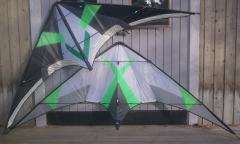

.jpg.62c77b7fe0b99705f9234d1d3bbea43b.jpg)
